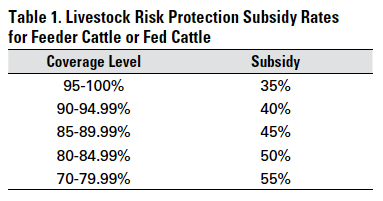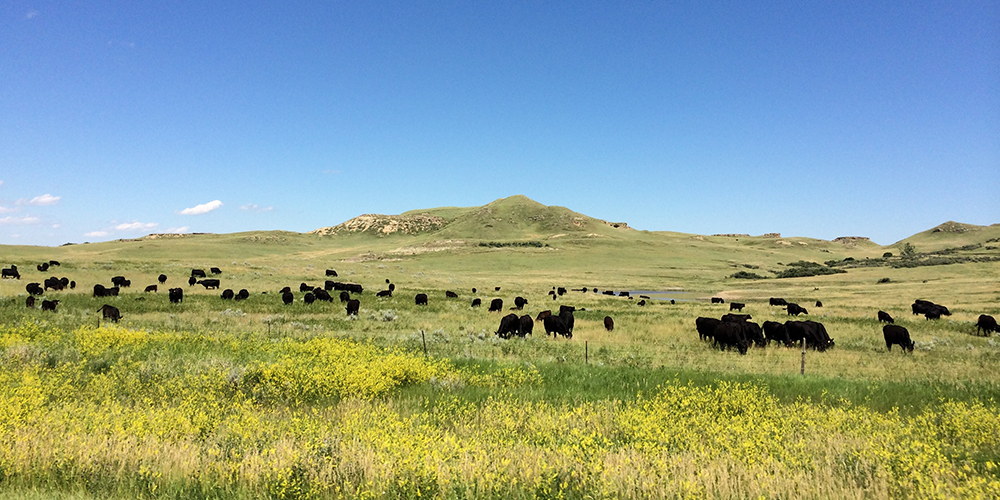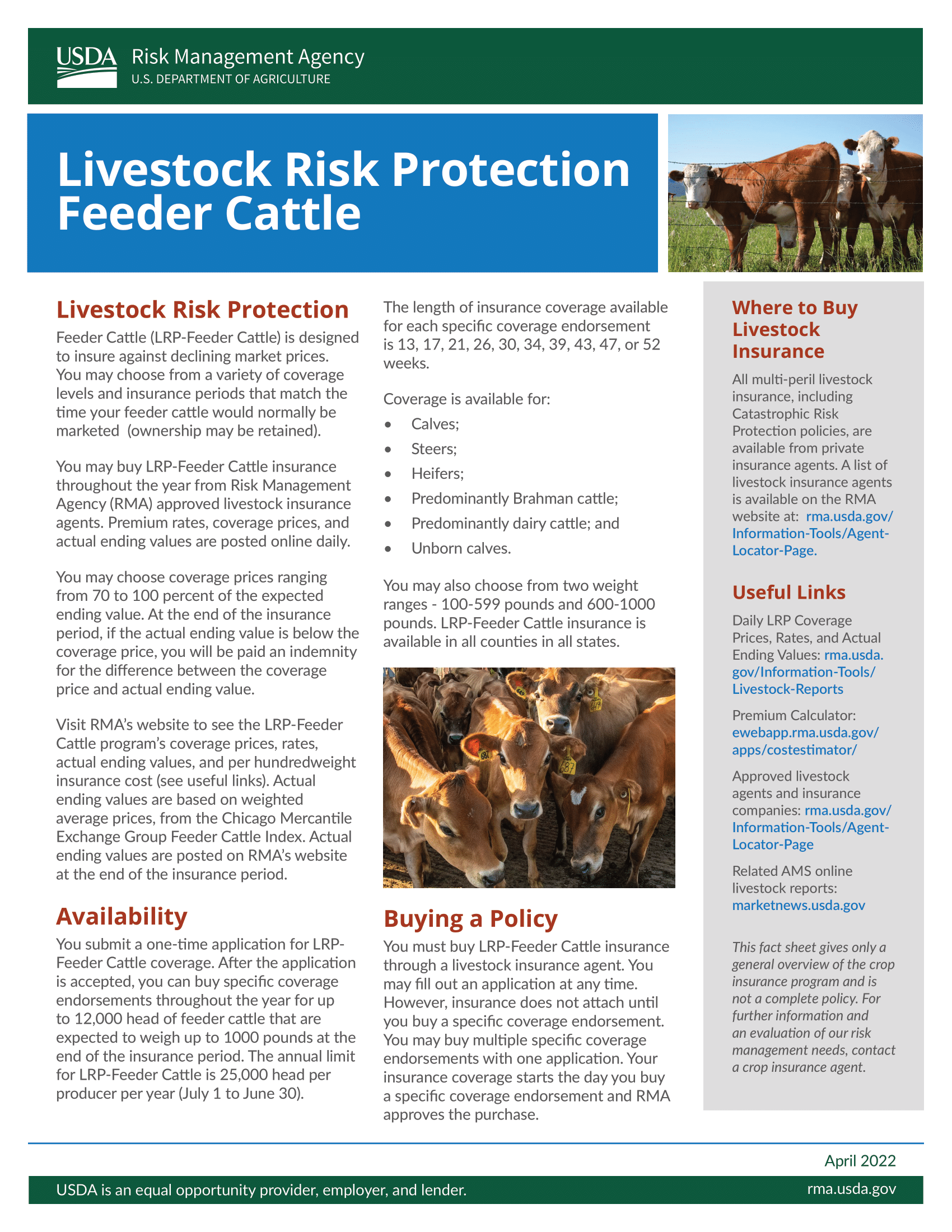Specialist Assistance: Bagley Risk Management Strategies
Specialist Assistance: Bagley Risk Management Strategies
Blog Article
Recognizing Animals Risk Security (LRP) Insurance Coverage: A Comprehensive Overview
Browsing the world of livestock risk defense (LRP) insurance coverage can be an intricate venture for several in the farming industry. From just how LRP insurance operates to the numerous insurance coverage options offered, there is much to discover in this detailed overview that might potentially shape the means animals producers come close to threat administration in their companies.

Exactly How LRP Insurance Coverage Functions
Sometimes, comprehending the auto mechanics of Animals Danger Security (LRP) insurance can be intricate, however breaking down just how it functions can supply quality for breeders and farmers. LRP insurance policy is a risk management tool designed to protect animals producers against unforeseen price declines. It's important to note that LRP insurance coverage is not a profits warranty; rather, it concentrates solely on rate threat security.
Eligibility and Insurance Coverage Options

When it comes to protection alternatives, LRP insurance policy offers producers the adaptability to pick the protection degree, insurance coverage duration, and recommendations that finest match their danger monitoring needs. By recognizing the qualification requirements and protection alternatives available, animals manufacturers can make enlightened decisions to manage threat effectively.
Benefits And Drawbacks of LRP Insurance Policy
When examining Animals Danger Protection (LRP) insurance policy, it is vital for animals manufacturers to weigh the benefits and disadvantages inherent in this risk administration device.

Among the primary advantages of LRP insurance is its ability to provide security versus a decrease in livestock rates. This can assist guard producers from financial losses arising from market fluctuations. Furthermore, LRP insurance policy offers a degree of versatility, permitting producers to customize coverage degrees and plan periods to suit their details demands. By securing an assured cost for their livestock, manufacturers can much better manage threat and prepare for the future.
However, there are additionally some disadvantages to take into consideration. One limitation of LRP insurance policy is that it does not protect versus all kinds of dangers, such as illness break outs or natural disasters. Furthermore, premiums can often be expensive, especially for manufacturers with large animals herds. It is critical for manufacturers to carefully evaluate their private risk direct exposure and monetary circumstance to determine if LRP insurance is the ideal danger management tool for their operation.
Understanding LRP Insurance Policy Premiums

Tips for Making The Most Of LRP Conveniences
Taking full advantage of the advantages of Animals Threat Security (LRP) insurance coverage needs calculated planning and proactive risk management - Bagley Risk Management. To make the most of your LRP coverage, take into consideration the following ideas:
Frequently Analyze Market Problems: Remain informed regarding market trends and price changes in the livestock market. By checking these elements, you can make enlightened decisions about when to acquire LRP protection to shield versus potential losses.
Set Realistic Insurance Coverage Degrees: When picking insurance coverage degrees, consider your manufacturing expenses, market worth of animals, and possible threats - Bagley Risk Management. Establishing reasonable insurance coverage levels makes sure that you are effectively safeguarded without paying too much for unnecessary insurance policy
Diversify Your Coverage: Instead of counting entirely on LRP insurance, think about expanding your threat administration approaches. Incorporating LRP with other threat monitoring tools such as futures agreements or options can offer comprehensive insurance coverage against market uncertainties.
Testimonial and Readjust Coverage Regularly: As market problems alter, regularly evaluate your LRP coverage to ensure it straightens with your existing threat exposure. Readjusting protection levels and timing of acquisitions can aid optimize your risk security method. By adhering to these pointers, you can take full advantage of the advantages of LRP insurance coverage and protect your livestock procedure versus unanticipated risks.
Verdict
In conclusion, livestock danger defense (LRP) insurance is a valuable tool for farmers to handle the financial dangers connected with their animals operations. By understanding just how LRP functions, qualification and protection choices, along with the advantages and disadvantages of this insurance, farmers can make educated decisions to safeguard their resources. By thoroughly taking into consideration you could try here LRP premiums and executing methods to make the most of advantages, farmers can mitigate potential losses and make certain the sustainability of their operations.
Livestock manufacturers interested in getting Animals Danger Security (LRP) insurance policy can check out an array of qualification criteria and coverage alternatives tailored to their details livestock procedures.When it comes to insurance coverage choices, LRP insurance coverage uses manufacturers the flexibility to choose the coverage level, protection duration, and recommendations that finest fit their threat monitoring needs.To understand the intricacies of Animals Danger Protection (LRP) insurance totally, comprehending the elements affecting LRP insurance policy costs is important. LRP insurance coverage premiums are established by numerous elements, consisting of the protection degree chosen, the anticipated cost of livestock at the end of the insurance coverage period, the kind of animals being guaranteed, and the length of the insurance coverage duration.Testimonial and Adjust Protection Routinely: As market problems change, regularly examine that site your LRP protection to guarantee it aligns with your current danger exposure.
Report this page